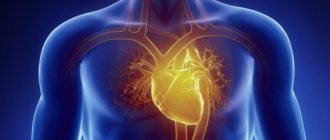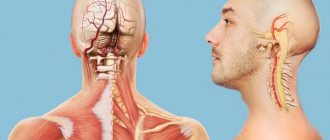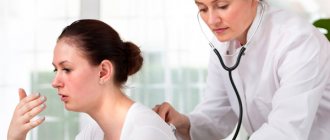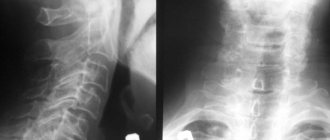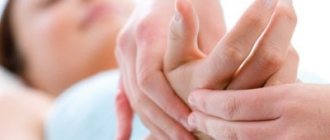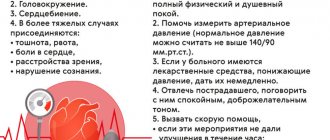Have you noticed that it is difficult for you to turn your head? Does any movement of your neck cause discomfort and pain? Does your head literally not rest on your shoulders? Then it’s time for you to go to the doctor, since all these are symptoms of cervical osteochondrosis.
The neck area is most susceptible to various injuries. This part of the body is quite mobile, but its muscle corset is often weak. The load on small vertebrae is considerable, and the spinal canal is quite narrow. Excessive pressure leads to pinching.
Hundreds of thousands of people of different ages feel heaviness in the back of the head and unpleasant tingling in the upper extremities every day. Considering that these are trifles, they attribute the symptoms of cervical osteochondrosis to banal fatigue or a cold, not even suspecting how dangerous and insidious this disease can be.
There are many nerve endings and blood vessels in the neck. Also, it contains the vertebral artery, which is responsible for feeding the cerebellum and some parts of the brain. With osteochondrosis, it becomes pinched, which leads to impaired coordination of movements, decreased visual acuity, and in extreme cases, to a stroke.
Symptoms of cervical osteochondrosis in men and women
Symptoms of cervical osteochondrosis of the spine do not appear overnight. They skillfully “disguise” and mislead people. A visit to the doctor is put off until later, not considering it a priority. But you should not ignore the symptoms of cervical osteochondrosis in men and women, so as not to miss precious time. These include:
- Dizziness. With this disease, this symptom is permanent. It may seem that objects in front of him are blurry and have unclear outlines;
- Painful sensations in the cervical-collar area. Their degree directly depends on the stage at which the disease is located. In the early stages, the pain is episodic, and in the later stages it becomes constant and unbearable. It is difficult for a person to turn his neck;
- Hissing or ringing in the ears. These extraneous sounds appear when a patient with osteochondrosis suddenly changes his body position. For example, when getting out of bed after sleep. Often ringing and noise is accompanied by dizziness;
- Feeling of lack of air. It is difficult for a person to take a deep breath, sometimes shortness of breath may occur;
- Nausea and sometimes vomiting. These symptoms of cervical osteochondrosis appear when blood circulation in certain parts of the brain is disrupted. The condition worsens when a person tries to turn his head sharply;
- Deterioration of vision and blurred vision, “spots” or “stars” in the eyes. These symptoms indicate that brain nutrition has deteriorated. They occur mainly in the later stages of the disease;
- Blood pressure surges. It becomes difficult to balance with medication;
- Fainting. Occurs due to vasospasm;
- Soreness and dryness in the throat, it becomes difficult to swallow, and a “lump” sensation appears. These symptoms of cervical osteochondrosis in men and women are among the first to occur;
- Unpleasant pain in the joints of the shoulders;
- Numbness in fingertips.
In addition to the general symptoms of cervical osteochondrosis, there are also syndromes that are present in this type of disease.
Vertebral syndrome
This group includes symptoms that are caused by damage to the cartilage and bones of the spine. It includes:
- deterioration of neck mobility;
- discomfort when turning the head;
- damage to the vertebrae or cartilage, which are visible on x-rays.
Vertebral artery syndrome
In this case, the symptoms of cervical osteochondrosis in men and women are associated with narrowing or spasm of the arteries that are located in the spine. They participate in blood circulation, nourishing the brain. Manifestations of vertebral artery syndrome include:
- noise and ringing in the ears;
- dizziness and headaches;
- sudden decrease or increase in pressure;
- nausea and vomiting;
- decreased visual acuity;
- drowsiness and fainting;
- chronic fatigue.
Cardiac syndrome
Similar to the condition that a person experiences when the heart muscles are damaged. Its symptoms include:
- painful sensations and burning sensations in the chest area;
- general weakness and fatigue;
- decreased performance;
- increased heart rate.
Radicular syndrome
This condition is associated with infringement of the nerve endings (roots) that are located in the spine, in the cervical region. The larger the lesion, the more pronounced the symptoms will be. These include:
- pain and numbness in the back of the head;
- frequent hiccups, lump in the throat, numbness of the tongue;
- pain in the shoulder area, which becomes stronger when moving your arms;
- numbness of fingers.
Most often, several nerve endings are infringed, so symptoms of cervical osteochondrosis can also appear in pairs.
Blood pressure in cervical osteochondrosis
Cervical osteochondrosis is often combined with hypertension, although in some cases it may be the only cause of high blood pressure. It is not always possible to reduce it with the help of medications. And the patient rarely complains to the doctor, as he writes off pain in the back of the head as a natural symptom of hypertension.
How are cervical osteochondrosis and blood pressure related? The fact is that with osteochondrosis, the discs between the vertebrae become flattened. Therefore, they begin to put pressure on each other while walking, running, jumping and sharp turns of the head. When such “shock absorbers” become unusable, the vertebrae “glue” together and compress the arteries that lead to the back of the head. As a result, ischemia and pain occur. But the human body is not stupid, so it tries to correct this problem and compensates for it with increased pressure, with the help of which it tries to “push” blood through the arteries.
There is another situation when the symptoms of cervical osteochondrosis are invisible, since the disease does not manifest itself in any way. The vertebrae do not yet compress the nerve endings, but swelling and pain still occur. This is due to the inflammatory process that occurs around the discs. The body sends an impulse to the brain as an alarm signal. Increased production of adrenaline begins, which causes blood pressure to rise. In this case, osteochondrosis may be accompanied by rapid heartbeat and panic attacks.
In the initial stages of the disease, the muscles of the neck and back tense reflexively. This fact also contributes to the release of adrenaline and increased blood pressure.
Panic attacks with cervical osteochondrosis
Panic attacks in this case are a common occurrence. They can happen with different frequency, be short (a few minutes) or longer (about half an hour). After a panic attack, there are often residual symptoms. Panic attacks do not have to be a symptom of cervical osteochondrosis in women and men. But in most cases they point precisely to him.
As in the case of high blood pressure, the causes of panic attacks and fear attacks are deterioration of intervertebral nutrition, destruction of discs and their displacement. Nerves become pinched and arteries cannot supply the brain with sufficient oxygen.
Panic attacks can develop as a result of:
- lack of microelements, which leads to impaired calcium metabolism;
- reducing the content of hydrogen ions in the blood, which causes internal tissues of the body to suffer;
- deficiency of elements important for the nervous system such as selenium and magnesium.
What is osteochondrosis
Back diseases are a cost of civilization. Pathological processes in the spine inevitably lie in wait due to prolonged standing, low mobility, sedentary work, or, on the contrary, fanatical activity and injuries. These factors create stress on the spinal column and cartilage joints - discs. Especially at risk are professional athletes, pregnant women, people who abuse alcohol and cigarettes, are overweight and have diseases of the thyroid gland (endocrine system), and people with hereditary diseases. Osteochondrosis affects any part of the spine: cervical, thoracic, cervicothoracic, lumbar, lumbosacral. But irreversible destruction of any zone occurs in the same way:
- The onset of osteochondrosis occurs unnoticed. Deformation, thinning and dehydration of the intervertebral disc provokes the appearance of microcracks and loss of elasticity. All that a person can feel at the initial stage is discomfort between the shoulder blades and in the neck during prolonged immobility, the desire to stretch, lumbago during intense loads, sudden movements.
- The next stage is the appearance of protrusion. The result of cartilage destruction is a reduction in the space between the vertebrae. As a result, there is a natural pinching of the nerve endings, a sharp pain in the back of any location. Elementary mobility becomes limited, working capacity is lost, weakness occurs, and the psycho-emotional background decreases.
- The further the disease develops, the more acute the manifestations become: complete or partial abrasion of the intervertebral cartilaginous lining. This pathology becomes clearly visible on an x-ray. The disease worsens, bringing real suffering, immobilization, pain. Which is becoming increasingly difficult to calm down. Only rest, potent drugs, and blockade procedures, when an analgesic is injected directly into the sore spot, can alleviate suffering.
- At the latest stage, the formation of bone growths - osteophytes - occurs where there used to be cartilage. These formations will inevitably periodically injure the nerves, disrupting the mobility of the spine and causing pain. At this stage, there is a high probability of surgical treatment.
Treatment and prevention of symptoms of cervical osteochondrosis
Treatment of symptoms of cervical osteochondrosis of the spine should be carried out comprehensively. In each case it is necessary to find an individual approach. Medicines, physical therapy, massages and some folk remedies can help cope with the disease.
If osteochondrosis is in an acute stage, then its treatment will be aimed at improving blood circulation and eliminating spasms and pinching. The doctor can prescribe medications to the patient that will improve blood flow, as well as relieve inflammation and reduce pain.
Medicines for the treatment of cervical osteochondrosis
Clinical studies have shown that during exacerbation of cervical osteochondrosis, analgesics and non-steroidal anti-inflammatory drugs work well. In addition to them, the doctor prescribes chondroprotectors, antispasmodics and drugs that stimulate blood circulation in the tissues.
For complex therapy in the treatment of cervical osteochondrosis, the following are used:
- Analgesics. Eliminate pain. Some of them can have an anti-inflammatory effect. Most often, analgesics are prescribed for lumbar osteochondrosis, which has a wide localization of pain;
- Antispasmodics. They have an analgesic and antispasmodic effect. Eliminate muscle spasms, block the sensitivity of nerve endings;
- Anti-inflammatory drugs. Relieve pain, reduce inflammation;
- Vasodilators. Necessary for improving blood circulation. Reduces the recovery time of the body after osteochondrosis;
- Chondroprotectors. Necessary for tissue restoration in damaged cartilage. One of the most effective drugs today is Artadol. It contains chondroitin sulfate, which actively fights the degradation of articular cartilage. The drug stimulates the production of proteoglycans. Improves metabolic processes in cartilage and bone tissue.
Regardless of the stage of the disease and the degree of pain, doctors strongly recommend refraining from self-medication. Only after examination by a specialist, analyzes and tests can the doctor prescribe adequate and effective treatment for cervical osteochondrosis.
Massage for cervical osteochondrosis
Massage is necessary to relieve pain and improve muscle tone. Different techniques are used, which depend on the stage of the disease. In the treatment of cervical osteochondrosis, the following are effective:
- stroking;
- squeezing;
- rubbing;
- kneading.
If pain is observed only on one side of the neck, then the massage begins with a healthy part of the body, gradually moving to the sick one. It can be performed at home or in a specialized institution. But you should be extremely careful, since incorrect movements and influences can only aggravate the situation.
Therapeutic exercises for symptoms of cervical osteochondrosis
Therapeutic gymnastics is used in complex therapy in the treatment of cervical osteochondrosis and gives excellent results. Unlike medications, it has no contraindications or side effects. Exercise therapy aims to improve blood flow to damaged parts of the body. It is important that the patient does not feel pain when performing certain exercises.
Therapeutic gymnastics is designed to strengthen the muscles in the neck area, and also serves as an excellent prevention of osteochondrosis.
How to treat osteochondrosis
Osteochondrosis is an irreversible phenomenon, but with regular monitoring of your health, preventive measures and timely treatment, you can significantly improve your quality of life and health and achieve stable remission. At any stage of development it requires a systematic integrated approach.
Applicators and massagers for the back
A visit to a massage parlor, a chiropractor or any other specialist whose competence includes osteochondrosis is mandatory. But even at home, you can and should help yourself in treating the disease. The use of massagers and needle applicators should be regular. The principle of any needle applicator is stimulation of bioactive points of our body. When the needles press on the surface of the body, stimulation of small capillaries, blood vessels, and nerve endings occurs. Blood circulation accelerates, nervous tension and muscle tone are relieved. Improved blood flow more actively distributes oxygen and nutrients throughout the body. Physical and mental vigor appears, the feeling of fatigue recedes. Relaxation comes and tone and general condition improve.
You should know that in the presence of an intervertebral hernia, it is recommended to apply a needle massager at short intervals of no more than a minute with breaks of 10 seconds.
Medicines for osteochondrosis
It is recommended to use medications at any stage of the disease after consultation with a specialist, since therapy involves an integrated approach.
Indications for taking medications:
- pain relief from any location;
- reduction of inflammation;
- improving the structure and quality of cartilage;
- return of mobility.
In accordance with the indications and severity of the process, a group of medications is selected: anti-inflammatory drugs (Diclofenac, Voltaren, Ibuklin, Ibuprofen, Nise, Nise-gel, etc.); sedatives; muscle relaxants (Mydocalm, Baklosan); chondroprotectors (Teraflex, Artra, Chondroxide); vasodilators (Trental, Eufilin, Mexidol).
Anti-inflammatory (NSAIDs)
, like analgesics, are designed to provide the very first aid - to relieve pain. But since the course is accompanied by an inflammatory process, it is important to reduce it too. This can be done externally - creams and ointments, gels, or take anti-inflammatory drugs internally in tablets and injections.
Sedatives
- are not always mandatory in the list of drugs for treating the spine. But since osteochondrosis is closely related to nerves, negatively affects the nervous system as a whole, provokes a state of blues, irritability and insomnia, the use of sedatives such as motherwort or valerian would be quite advisable. Muscle relaxants are drugs that eliminate increased muscle tone and normalize the functioning of the muscle frame. A muscle relaxant is used to relieve spasms and pain and reduce hyperreflexia. Neuromuscular blockers act directed towards a specific area that causes concern, but do not affect the central nervous system in any way. Antispasmodics, like blockers, have a direct effect on the painful area and effectively eliminate pain syndromes characteristic of osteochondrosis.
Chondroprotectors
- allow you to slow down the destruction of cartilage and joints, improve their structure. Promotes the restoration of tissues, cartilage, and restores mobility to joints. The therapeutic and restorative effect is especially noticeable with full complex therapy. Vasodilators are mandatory drugs in the treatment program for osteochondrosis and its symptoms. Needed to relieve excessive muscle tension and pain that provoke vasoconstriction. As a result, oxygen enters the tissues in insufficient quantities, and the functioning of internal organs is disrupted. The solution is vasodilators.
Vitamins
- an integral part of therapy. Necessary for incipient and advanced pathologies of the spine of any location. They are taken along with other medications according to the chosen regimen. Groups of vitamins that are necessary at any stage of osteochondrosis: A (retinol acetate), E (tocopherol acetate), C (ascorbic acid) mandatory group of vitamin B (B1, B2, B6, B12); vitamin D (calciferol); The action of vitamins has a beneficial general strengthening effect. Capable of starting cartilage regeneration processes, strengthening the bone structure of the spine, and restoring elasticity to ligaments; improve blood circulation in blood vessels.
Orthopedic products
An important role in the treatment of diseases of the back and the musculoskeletal system in general is played by orthopedic products - “correct” insoles, “correct” orthopedic mattress and pillow. The products are excellent for preventing problems with the musculoskeletal system in both children and adults. During sleep and rest, the body completely relaxes and remains in one position for a long time. At this moment, orthopedic products are able to evenly and anatomically correctly support the joints and muscle corset, and restore blood and lymph flow. After sleeping on an anatomical mattress and a special pillow, discomfort throughout the body goes away, morning stiffness of muscles and joints goes away, headaches stop bothering you not only after waking up, but also during the day. By normalizing blood flow, tissue nutrition improves and their regeneration accelerates. But it is worth noting that this process is not instantaneous. It will take time to rebuild the musculoskeletal system and get used to it, but it is definitely worth it.
Recommendations for the treatment of osteochondrosis
- Constant proper physical activity. It is advisable to master the “correctness” on your own, with an instructor or coach, and understand at least the minimal principles of the impact of physical exercise on muscle groups, joints and the skeleton, so as not to cause harm. After all, performing exercises incorrectly can lead to the opposite effect. A swimming pool is one of the types of physical activity.
- Swimming has a beneficial effect on the musculoskeletal system, relaxes and affects not only the muscles and joints, but also the nervous system. Monitor your emotional state.
- Often a painful attack is associated with a deterioration in psychological state. And yet, if an attack occurs, try not to concentrate on negative emotions and do not succumb to panicky, pessimistic moods. Get out into the fresh air more often and look for positive emotions; during seasonal exacerbations, take adaptogens.
- At least once every six months, try to undergo a course of professional therapeutic massage. Be sure to carry out prevention at home using massage mats and massagers.
- In any unclear situation, hang on the horizontal bar. At least for a few minutes. Since a person is an upright creature, the spine is under tension most of the time; joints and cartilage are compressed over time under the influence of weight and gravity. Hanging on the horizontal bar, you perfectly stretch the shoulder muscles, which increases their flexibility, improves joint movement and reduces muscle tension, the spine straightens, and relaxation occurs. The horizontal bar is a good alternative to a hood.
- Maintain the overall tone of the body and take care of the immune system. Frequent colds can lead to complications in the form of inflammation of nerve endings and joints. For example, inflammation of the nasal mucosa, sinusitis, sinusitis, and bronchitis can spread to nearby nerve endings and provoke attacks of neuralgia.
- Always remember that prevention is cheaper than cure, both financially and emotionally. Look around for reasons to be happy and be healthy!
What pain and other signs of thoracic osteochondrosis may be
Due to the fact that the nerves may be pinched, the lungs and heart may feel painful, and the hands may ache. In addition, symptoms are observed:
- dyspnea;
- stiffness of movements;
- fast fatiguability;
- muscle spasms;
- intercostal neuralgia;
- sharply painful sensations when coughing, inhaling, laughing, sneezing;
- difficulty moving the body;
- inability to be in a static position.
It has been observed that the disease is more severe in women than in men. To answer the question: “can the heart hurt with osteochondrosis?”, you should know that this is a subjective feeling of a person suffering from this disease. However, you should not diagnose yourself, since the “motor” may still fail simultaneously with the intervertebral discs. But the doctor must find out this.
Pain due to lumbar osteochondrosis
This species, according to statistics, accounts for half of the total diversity of the disease. And if with its thoracic variety the organs suffer less, since they are surrounded and held by the ribs, then the picture is completely different with the lower back. There are many nerve endings here, so the pain will be severe and sharp. Possible acute, subacute and chronic course. Acute pain syndrome in lumbar osteochondrosis is called lumbago or lumbago. At the same time, the person, as they say, cannot breathe or gasp, his lower back burns or goes numb. The duration can be up to a week, and from time to time, if a person is hypothermic, turns sharply, or physically works for a long time, it can come again and last a whole month. Irradiation is observed in the leg, buttock, and sacrum.
